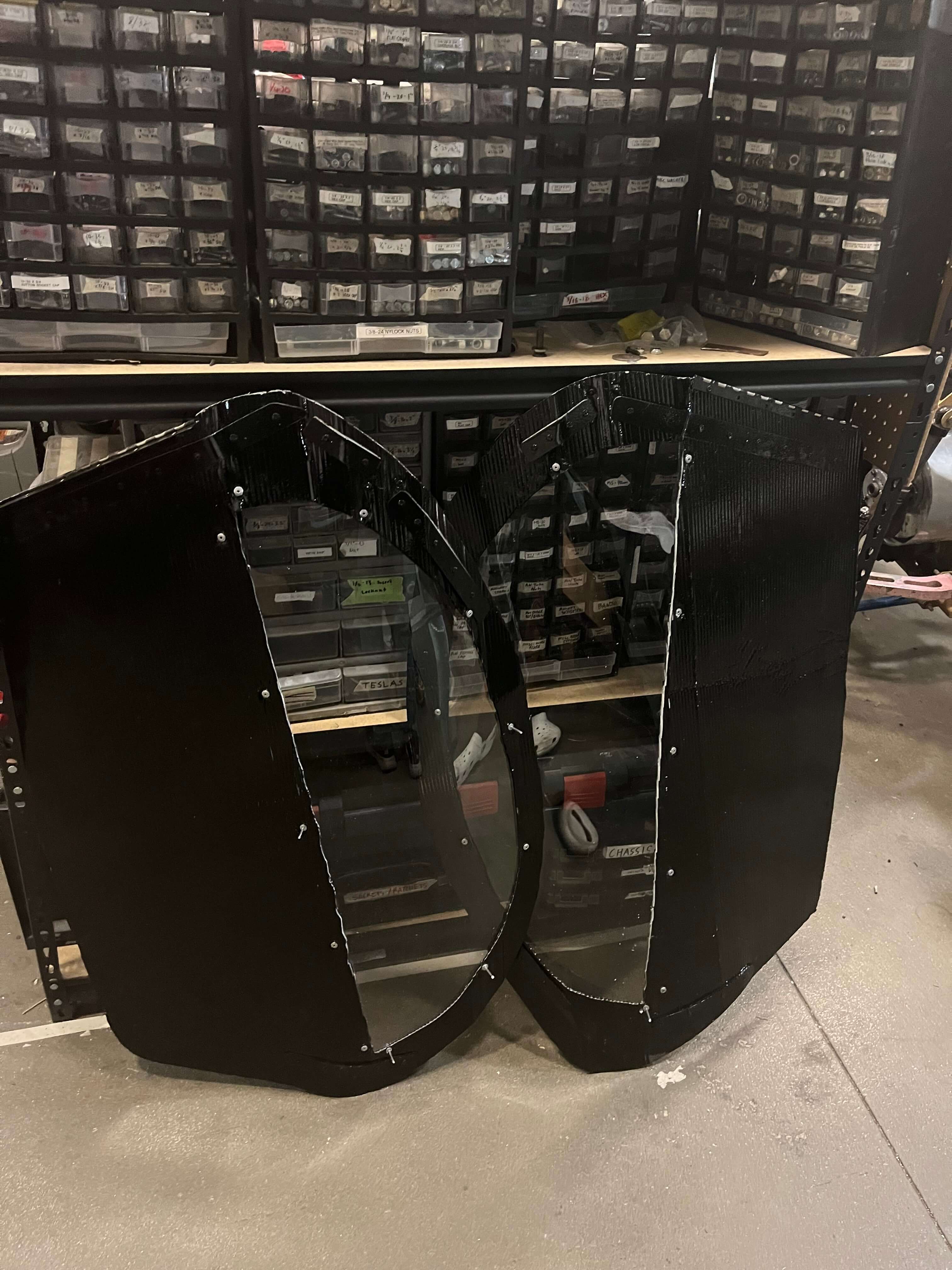UCLA Bruin Racing Supermileage (Structures)
- Bruin Racing is a UCLA club that designs and manufactures cars for racing. Supermileage is one of the racecars that's designed to be fuel efficient rather than very quick. As a result, we designed our car to be aerodynamic to reduce drag and overall fuel consumption. My job on the structures team is to design the outer components of the car such as the head lights, wind shield, winshield wipers, and doors.
- Head lights: the headlight we used features a lofted surface that surrounds the light bulb. The headlight surface is 3D printed and created in Soldiworks. We used that "conic" type of surface because it helps guide the light beams out of the car. The interior of the headlight is painted white to reflect light out into the environment. The hardest part was definetely trying to mount the headlight onto the car. Due to the curved nature of our car, there wasnt a really good way to mount this headlight. So, we used modelling clay to help form the shape of the headlight into the curved surface where it was going to be mounted. We then applied hot glue to the headlight to help it adhere. Finally, we applied polycarbonate sheets onto the hole of the headlight.
- Doors: due to manufacturing issues, the doors we used had to be made out of corruageted plastic sheets instead of the resin infused sheets that made up the rest of our car. Because the plastic sheets were very flimsy, they were refinforced with steel plates in some areas. The windows are made out of polycarbonate sheets that are riveted onto the door. Lastly, the door was fastened onto the car with a hinge and the door was painted black to match the rest of the car.
- Windshield: the windshield is one solid piece of polycarbonate sheet. The hardest part of this was trying to mount it onto the car. The sheets come in flat but we need it to curve to match the curve of our car. Since the polycarbonate sheets are a little rigid, it was hard trying to bend it in a way that it would be perfectly rounded. We tried our best to mount the windshield with rivets but there ended up being a lot warping in the plastic.
- Windshield Wipers: the windshield wiper consisted of a wiper we found at the store and a servo we bought online. The hardest part was trying to figure out a way to securely mount the wiper onto the servo. Due to time contraints we ended up using a piece of wood and hot glue. Due to how the wiper and servo had no good way of attaching to each other, we had to imrprovise and we came up with this. Additionally, the windshield wiper we boguht was made for flat surfaces, but our car's winshield is curved, so the wiper wasn't effective at removing much water.
- Improvements: one improvement would be to 3D print the headlight surface to match the surface of the car. When we made the CAD, the headlight was completely flat at the edge, so in the future I would like to make it more curved. I also think in the future that we should use heat to warp the plastic of the windshield before we try to mount it onto the car. This will make it easier for us to attach and there will be minimum warping. To address the windshield wiper, I think we should try to 3D print a part that can help fasten the servo and wiper. I also think we shoudld look into creating a curved windwhield wiper to match the surface of the windshield.






